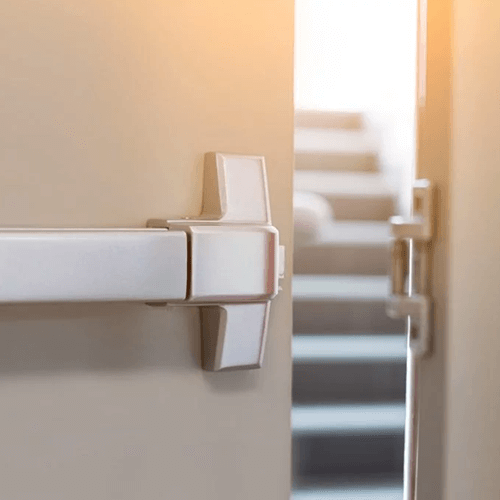
The door to your commercial property is as reliable as its condition. An adequately maintained fire-rated door protects any building's structural integrity, occupants, and assets if there is a fire-related emergency. Because of its importance, every business owner must understand how to manage fire door maintenance.
Business owners can take several steps to ensure they properly maintain their fire-rated door.
A fire-rated door is specifically designed to slow or prevent the spread of fire and smoke. These doors are heavy and constructed from materials like metal or gypsum. When a fire-rated door is installed correctly, it should not combust when exposed to extreme fire temperatures.
Commercial buildings more commonly feature fire-rated doors than residential homes. You can find them in most public buildings and places like college dormitories.
Many buildings are required to have a fire door. Numerous benefits make them ideal even if your facility doesn't fall into that category. A fire can happen at any time in any building. When you have a fire-rated door, the fire and smoke will not spread as quickly. This saves lives and can save your building from extensive repairs.
Understanding the importance of keeping fire-rated doors in compliance with the National Fire Protection Association (NFPA) codes is crucial to their function. These doors are designed to protect against a spreading fire, but they need proper maintenance to ensure adequate protection.
Not keeping fire-rated doors up to code can result in a severely burned building and potential injuries to your employees or patrons.
According to Standard 80 of the NFPA, all fire-rated doors must pass a yearly inspection administered by a trained professional. However, there are steps you can take to ensure these protective doors will pass the test.
The first thing a trained inspector will do is complete a visual inspection. They will review every part of the door and surrounding components. Before your assessment, you can look for anything that is out of place or could cause a hazard.
Inspect the door for the following:
You must also ensure that nothing obstructs the door's path and interferes with its operation.
Open and close the fire-rated door as normal and check for any signs of damaged components. Imbalanced or damaged parts in the door could create a hazard or impair its operation.
Repair any issues found during the operational check before moving on to the next step.
After determining the door is operational, you can complete a drop test. As part of Standard 80, you must conduct an annual drop test to verify that the assembly will completely close during an emergency. This test ensures the door closes completely with an average speed of at least 6 inches per second. However, it must not exceed 24 inches per second.
Consider creating a fire door register if your building has multiple fire-rated doors. This helps you organize all information, including maintenance, components, and installation dates. Staying organized will ensure that you complete all vital inspections needed to stay in compliance.
Another way to maintain compliance with fire-rated door regulations is to have the correct signage. During a professional inspection, the inspector will check for appropriate signage, which includes labels that indicate it is a fire-rated door.
Although other reliable individuals can be delegated maintenance tasks, the building owner or manager typically schedules the yearly inspection. A trained fire door inspector must conduct the official test.
Do you need to replace or install fire-rated doors in your commercial building? Contact CDF Distributors to discuss your needs.